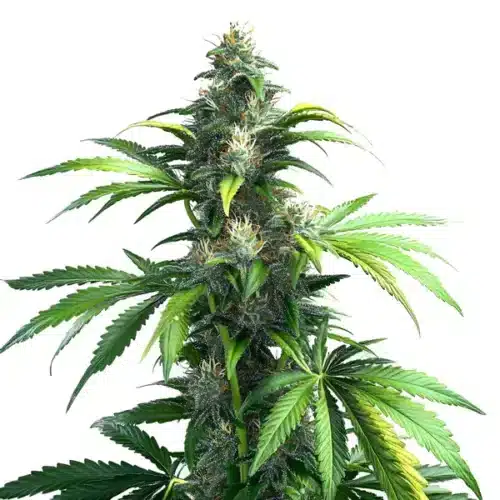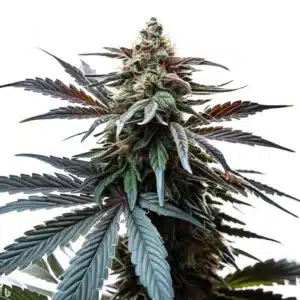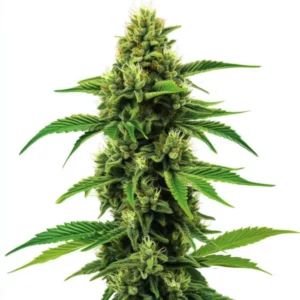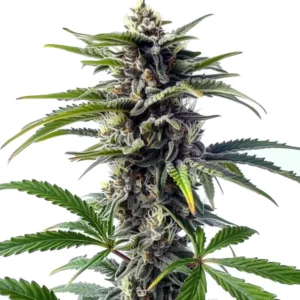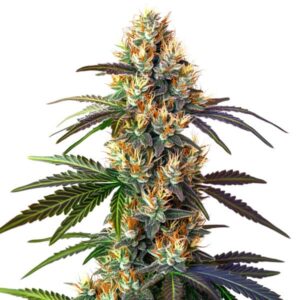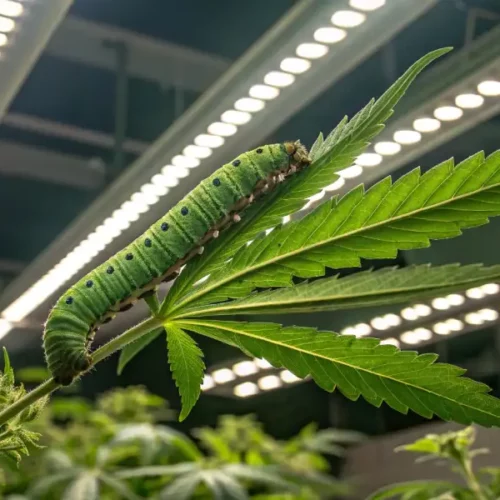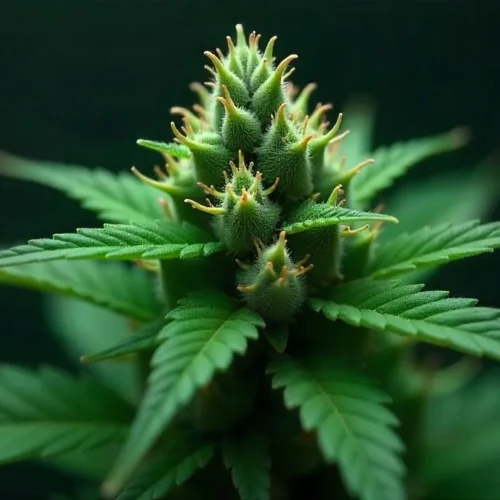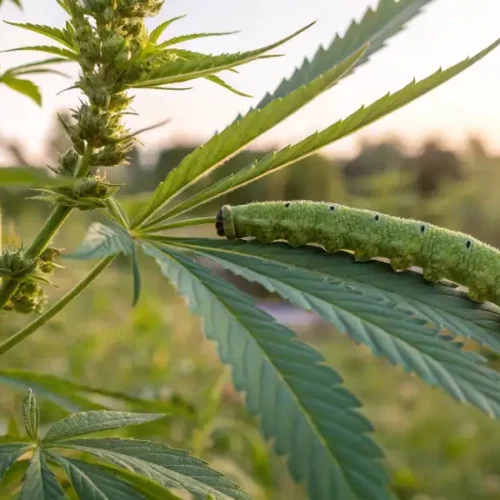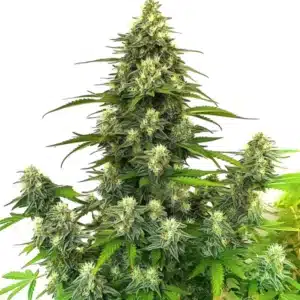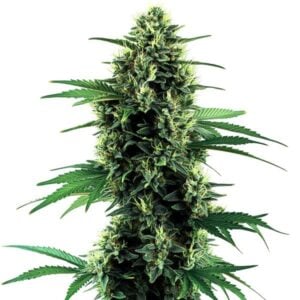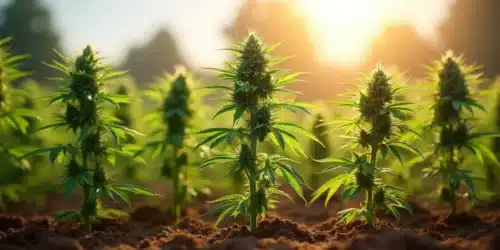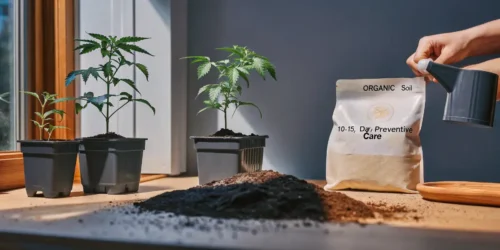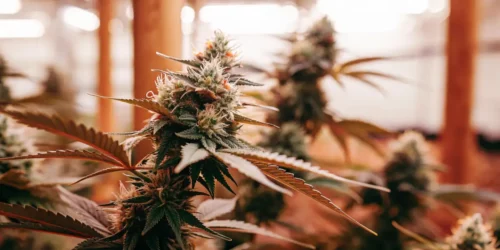When growing autoflowering cannabis, many growers find themselves pondering the technique of defoliation. This practice involves the removal of select leaves from your plants, but the real question is, should you defoliate autoflowers? Let’s explore what defoliation is all about, the reasons behind it, and how it can affect your growing experience.
What is Defoliation?
Defoliation is the intentional removal of leaves from cannabis plants, often with the goal of increasing light exposure and airflow throughout the canopy. Think of it as giving your plants a haircut: it can help them look tidier and promote healthier growth. By strategically removing some leaves, growers aim to enhance the vigor of the remaining foliage and ultimately boost the yield. However, the effectiveness of this technique varies depending on the plant type and the grower’s experience.
Recommended Strains
Black Demon OG
 THC: 17% - 20%
THC: 17% - 20% Type of seed: Feminized
Type of seed: Feminized Phenotype: Mostly Indica
Phenotype: Mostly Indica Day to flower: 8 - 10 weeks
Day to flower: 8 - 10 weeks
Black Domina
 THC: 15% - 20%
THC: 15% - 20% Type of seed: Feminized
Type of seed: Feminized Phenotype: Mostly Indica
Phenotype: Mostly Indica Day to flower: 8 - 10 weeks
Day to flower: 8 - 10 weeks
Autoflowers differ from photoperiod cannabis in that they automatically transition to the flowering stage based on their age, rather than changes in light cycles. Since these plants have a shorter lifespan and a tightly packed growing schedule, timing your defoliation is key. Imagine trying to make quick, significant changes in a short amount of time; it requires precision and care!
Promos & Deals
Benefits of Defoliating Autoflowers
Many growers choose to defoliate their autoflowers for various reasons, each of which can noticeably improve the health and yield of their plants. Let’s delve into some of the primary benefits:
- Improved Light Penetration: By removing upper leaves, you allow light to reach lower branches and buds – akin to trimming back bushes in your garden to let sunlight in. This promotes more uniform growth throughout the entire plant.
- Better Airflow: Thinning out the foliage helps to reduce humidity around the plant, potentially lowering the chances of mold and mildew’s unwelcome visit. Picture your plants lounging in a room with a fresh breeze circulating; it makes for a healthier environment!
- Enhanced Bud Development: With energy focused on the remaining leaves, plants might develop larger and denser buds, increasing your overall harvest. Think of it as redirecting traffic on a busy road – by minimizing congestion, everything flows more smoothly.
- Shape Management: Defoliation allows you to keep your plants within a manageable size and shape, an essential consideration for indoor growers with limited space. It’s about finding balance and ensuring your plants have enough room to thrive.
While these advantages are appealing, it’s also important to weigh the potential drawbacks, especially in the context of autoflowers, where timing and technique are everything.
Drawbacks of Defoliating Autoflowers
Despite the benefits, defoliation carries risks, especially for autoflowering plants. Some challenges growers may face include:
- Stress on the Plant: Removing leaves can induce stress, resulting in stunted growth or lower yields if done incorrectly. Imagine uprooting a mature tree; it would undoubtedly struggle for a while before regaining its strength.
- Timing Issues: Autoflowers have a condensed life cycle. Misjudging when to defoliate can severely hinder their development. It’s comparable to racing against a clock – every second counts!
- Loss of Energy Sources: Leaves play a critical role in generating energy for the plant through photosynthesis. Over-removing them can stifle this vital process. Picture a solar panel deprived of sunlight – it simply won’t work effectively!
- Potential for Overdoing It: Beginners may be motivated to remove many leaves simultaneously, which can lead to harmful results. It’s like a novice chef being overly enthusiastic with a knife; sometimes less is more in the kitchen and the garden!
The key is to exercise caution. Prioritize factors like the specific health of your plants and the overall conditions they are in before deciding to defoliate. It’s a journey that requires patience and thoughtfulness.
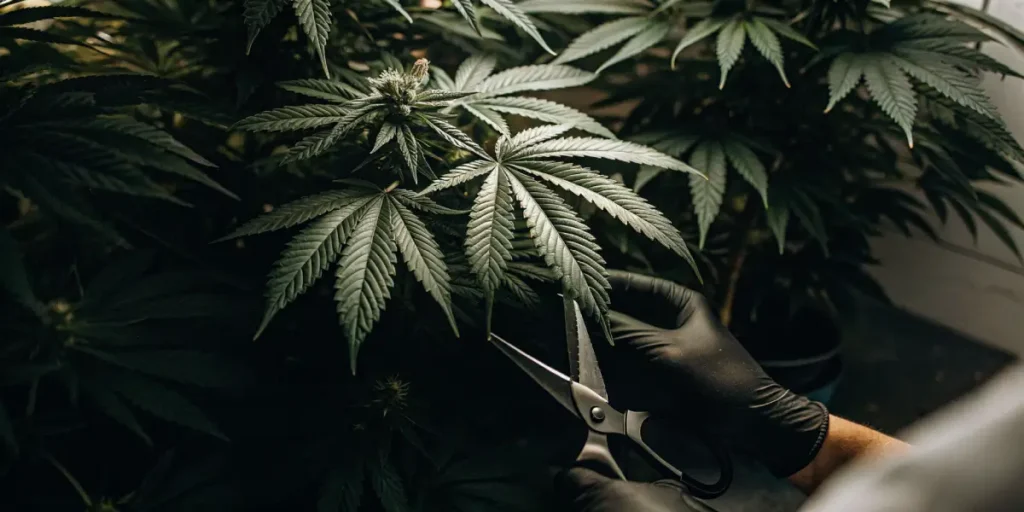
When to Defoliate Autoflowers
Timing your defoliation correctly is crucial for success. Here are some guidelines to consider:
- Early Vegetative Stage: A gentle trim during this stage can be beneficial. This approach encourages lower branches to grow and thrive, similar to encouraging lower branches of a fruit tree to spread out and receive sunlight.
- Pre-Flowering: Just before your plant enters the flowering stage, a light defoliation can direct energy toward bud production. It’s the equivalent of putting on finishing touches before a big showcase; every detail matters!
- Avoid Late Flowering: Steer clear of defoliation in the late flowering stage. This can shock the plant at a critical moment, much like a pop quiz right before final exams – it’s better to keep everything calm and steady.
Be readily aware of how your plant reacts to your interventions. Look for signs of distress, like yellowing leaves or reduced growth. Cultivating mindfulness will pay off in spades!
Techniques for Defoliation
If you’re inclined to defoliate your autoflowers, executing the process carefully is essential. Here are some practical techniques:
- Selective Leaf Removal: Concentrate on removing lower leaves or large fan leaves that block vital light from reaching bud sites. Think of it as pruning your roses to encourage a beautiful bloom!
- One Leaf at a Time: Instead of hastily removing several leaves, adopt a more cautious approach by taking off one at a time. This enables you to monitor the plant’s response closely.
- Use Clean Tools: Always wield clean scissors or pruning shears to minimize the risk of infection or damage. A clean cut goes a long way, akin to starting with a scrubbed pan while cooking!
- Avoid Over-Defoliation: Remember, less is often more. Initiate the process by removing a couple of leaves and observing your plant’s condition before making more significant changes.
Every growing situation is unique. Just as a chef finds their signature style in the kitchen, you’ll discover what works best for you through careful observation and experimentation.
Alternatives to Defoliation
If defoliation feels daunting, you can consider alternatives without resorting to this practice. Here are some methods to think about:
- Low-Stress Training (LST): This involves gently bending and tying down branches to encourage horizontal growth, optimizing light exposure without the need for leaf removal. Think of it like guiding vines along a trellis – it encourages healthy growth without the stress!
- Topping: This technique involves cutting off the top of the main stem, promoting a bushier plant structure. However, it should be approached with care as not all autoflower strains respond well to this method.
- Proper Spacing: Provide adequate spacing between your plants to naturally enhance airflow and light penetration. It’s like arranging furniture in a room; a little space can make a world of difference!
- Optimized Lighting: Consider using adjustable lighting that can be moved closer or farther away to ensure every part of the plant receives ample illumination without necessitating leaf removal.
Consider your unique growing circumstances when selecting an approach. Each technique has its merits, and thoughtful execution can yield fantastic results in any situation.
Monitoring Your Plant’s Response
After you’ve defoliated your autoflowers, it’s vital to keep an eye on how they react. Here are some critical factors to observe:
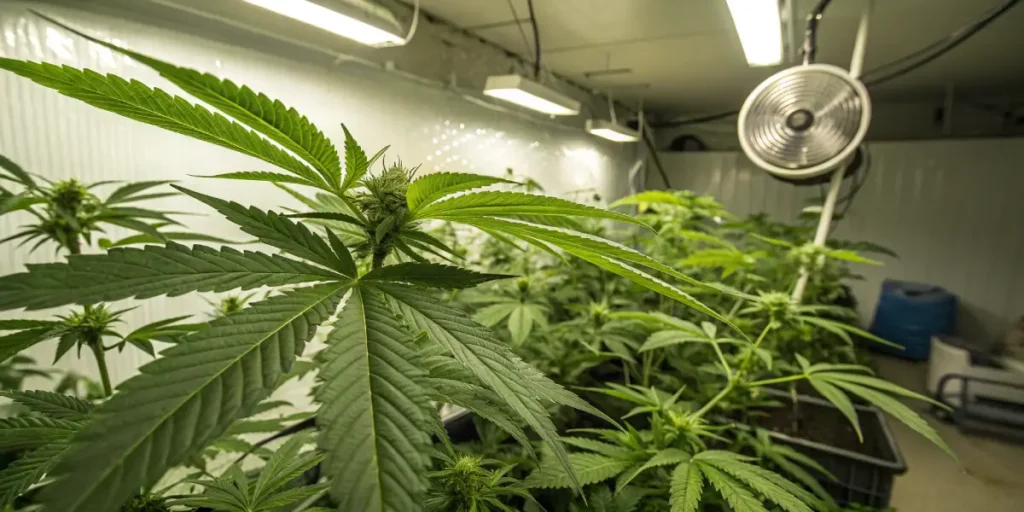
- Growth Rate: Notice any changes in the plant’s growth. Consistent growth is a good sign; if your plant suddenly slows down, that may indicate stress.
- Leaf Color: Pay attention to the leaf color of the remaining foliage. A healthy plant will exhibit vibrant green leaves. Yellowing or browning may suggest underlying issues.
- Bud Development: Watch for healthy bud formation. Larger and denser buds signify positive responses to your care and techniques.
- Overall Appearance: A healthy autoflower should maintain a vibrant appearance. Signs of drooping or wilting indicate potential problems that may need addressing.
If you encounter adverse changes, it may be prudent to reconsider your defoliation strategy or technique. Each grower’s experience contributes to a better sense of what works best for their plants, and this adaptation is part of the growing journey.
FAQs
Is it safe to defoliate autoflowers?
Yes, defoliation can be safe, but you must proceed with caution. Proper timing and techniques are paramount to ensure the health of your plants.
When is the best time to defoliate?
Typically, the early vegetative stage or immediately before flowering are ideal times to consider defoliation for autoflowers.
Can defoliation increase my yield?
Defoliation could potentially enhance yields by optimizing light and airflow, although results can vary from one grower to another.
How much should I defoliate?
A good rule of thumb is to start with a small number of leaves, especially those obstructing light or airflow. Monitor how your plant responds before proceeding further.
Are there risks associated with this practice?
Absolutely! If executed too aggressively, defoliation can lead to plant stress and decreased yield. Always prioritize gentle and observant techniques over aggressive tactics.
Determining whether to defoliate autoflowers isn’t straightforward and often comes down to personal experience and plant health. The practice offers both benefits and drawbacks that require careful consideration, especially given the limited life cycle of these plants.
As you embark on your growing journey, prioritize your plants’ health by adopting cautious techniques and closely monitoring their responses. With practice and patience, you can achieve impressive results while cultivating a thriving garden. Embrace the process, learn through experience, and happy growing!

